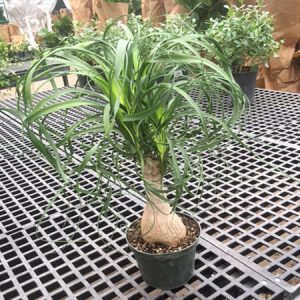Description
Aralia
There are around 40 species of vigorous deciduous and evergreen trees and shrubs and a few rhizomatous perennial from Southern and Eastern Asia, Malaysia, and North, Central, and South America found in mainly in Mountainous woodlands. They bear striking large compound leaves consisting of numerous leaflets are sometimes covered with large bristles. Some of the tree and shrub species have prickly stems and inclined to sucker from the roots. It produces numerous densely packed cream white or greenish white flowers are borne in terminal panicles of spherical umbels or cymes followed by spherical black fruits that are eagerly eaten by birds.
Grow in fertile, humus rich, moist soil in a sunny or partially shaded site sheltered from strong winds. All will tolerate light frost but need a warm humid summer for best growth. Poorer soils are said to produce hardier, longer-lived specimen. Divide rhizomatous perennial in spring.
Prone Alternaria leaf spot, Xanthomonas leaf spot, aphids, spider mitess, mealy bugs, and stem borers.
Aralia elata ‘Silver Umbrella’ – Aralia chinensis of gardens – Japanese Angelica Tree – This widely grown vigorous spreading to umbrella shaped crown, deciduous tree from Northeastern Asia and Japan grows 30’ feet tall and in breadth. The large compound leaves are to 4’ feet long and have 80 or more, dark green leaflets with paler undersides with white edges. In summer and early autumn it bears small near white flowers in large spreading panicle-like compound umbels to 24” long followed by black fruit to ¼” wide. The bark becomes slightly corky with age. In autumn the leaves turn yellow, orange, or purple with a reddish tone.
Zones 4-9





